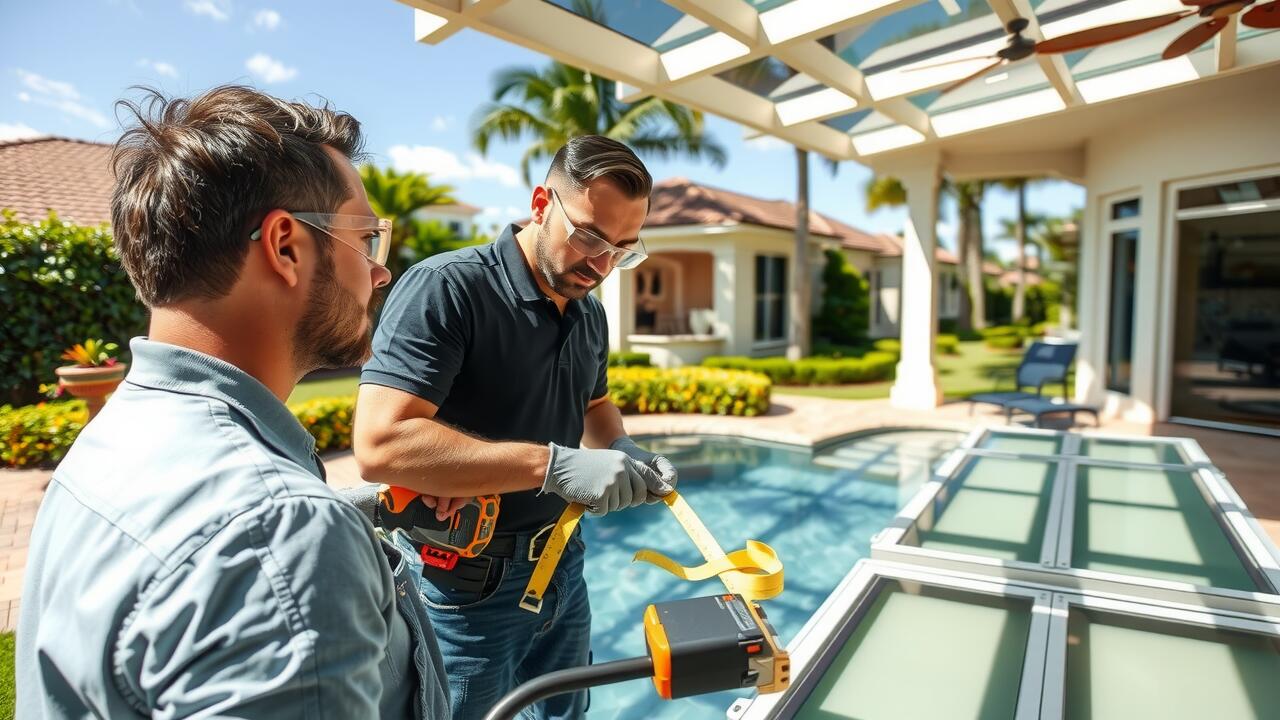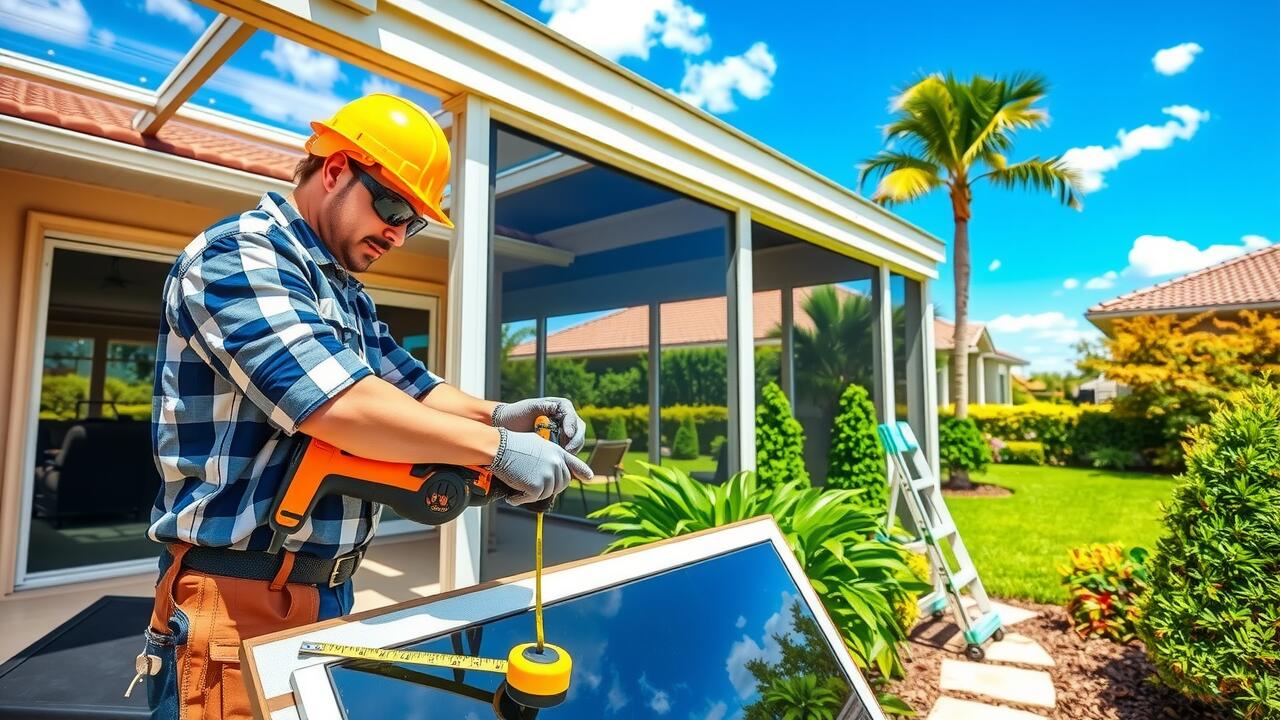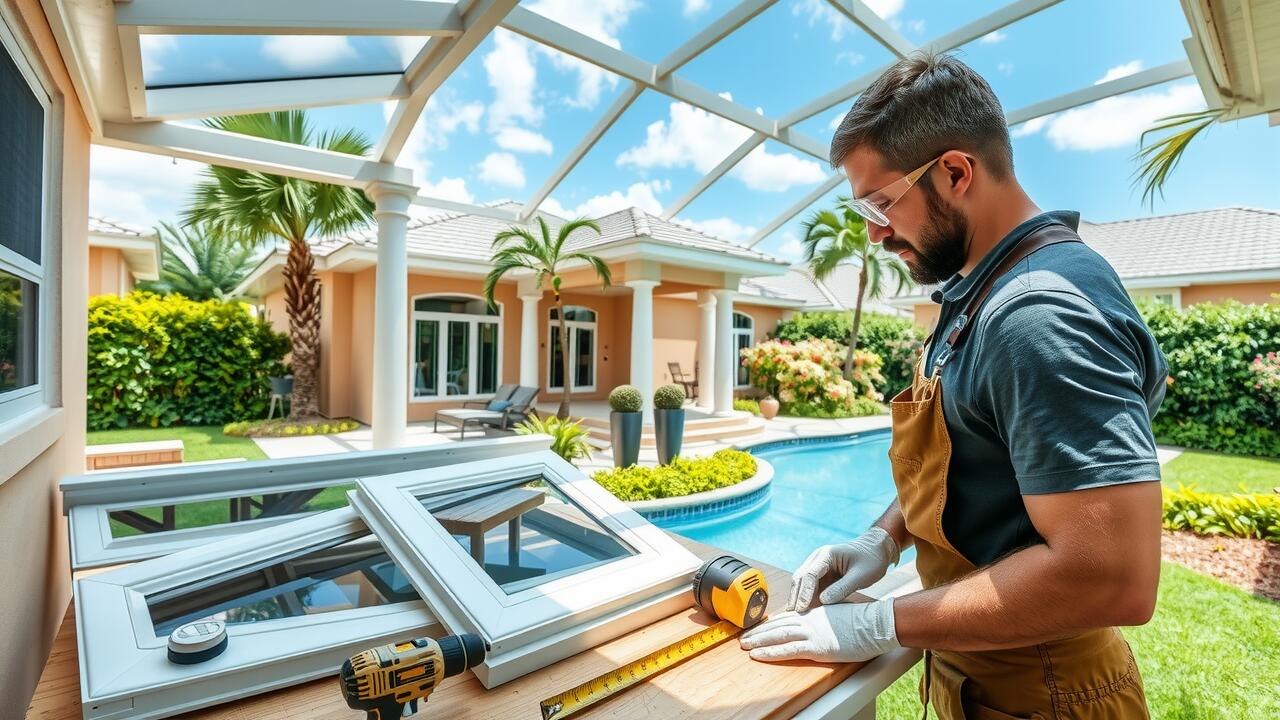Category: Uncategorized
Additional Features That Affect Pricing
When planning for lanai enclosures, several additional features can significantly influence the overall cost. Custom options like decorative columns, integrated lighting, and built-in seating can add both functionality and aesthetic appeal. Installing sliding or folding glass doors instead of traditional screens increases investment but enhances the space by allowing more natural light and offering panoramic views. Each feature selected not only affects the initial price but can also enhance the enjoyment of your enclosed lanai.
Ventilation and insulation elements also play a crucial role in pricing. Proper ventilation systems are necessary to maintain a comfortable atmosphere in all seasons, and varying insulation levels can create a more energy-efficient environment. Choosing high-quality windows with energy-efficient coatings may raise costs upfront but often results in long-term savings on heating and cooling bills. Budgeting for these features ensures that the lanai enclosures fit your lifestyle and preferences while considering future maintenance expenses.
Ventilation, Insulation, and Windows
When considering lanai enclosures, ventilation plays a vital role in ensuring comfort and air quality. Proper airflow can prevent overheating and excessive humidity, which are particularly important in warmer climates. Various ventilation options are available, from operable windows to built-in fans. Choosing the right system can significantly impact both comfort levels and energy efficiency.
Insulation is equally crucial for maintaining a comfortable environment year-round. Quality insulation helps regulate indoor temperatures and can reduce energy bills. Additionally, selecting double- or triple-paned windows can further enhance energy efficiency while providing noise reduction and UV protection. Together, effective ventilation and insulation contribute to the overall performance of lanai enclosures, making them a more enjoyable space.
Seasonal Considerations
Seasonal considerations play a significant role in the overall cost of lanai enclosures. The time of year when you decide to undertake the project can influence both material availability and labor costs. During peak construction months, such as spring and summer, you may encounter higher prices due to increased demand for contractors and supplies. Conversely, scheduling your lanai enclosure project during the off-peak season, typically in the fall or winter, can offer savings as contractors may be more willing to negotiate rates.
In addition to cost savings, the local climate should also inform your timing. Harsh weather conditions can delay construction and impact the types of materials that are appropriate for your area. For instance, if you live in a region prone to heavy rain or snow, it’s vital to consider how these factors will affect the durability and insulation of your lanai enclosure. Planning ahead can help ensure a smoother project and prevent unexpected expenses related to environmental challenges.
Timing Your Project for Cost Savings
Timing plays a crucial role in managing the costs associated with lanai enclosures. Each season often presents its own set of pricing dynamics, influenced by demand, weather conditions, and material availability. Choosing to schedule the enclosure during the off-peak months can yield significant savings. Contractors may offer discounts or lower rates to fill their schedules during slower periods, making it an advantageous time for homeowners to undertake the project.
Additionally, considering local market factors can also impact costs. Regions with a high volume of similar projects may drive prices up due to increased competition among contractors. Researching when local demand surges can help you time the project effectively. Taking advantage of seasonal promotions or contractor specials can lead to further price reductions, ensuring that you obtain a high-quality lanai enclosure without overspending.
Maintenance Expenses Post-Enclosure
After enclosing a lanai, homeowners need to consider the ongoing maintenance expenses that come with the new space. Regular cleaning is essential to keep the area looking its best, which may require purchasing specific cleaning supplies or hiring professionals for more extensive work. Additionally, maintaining the structural integrity of the enclosure, such as checking seals and frames, can prevent costly repairs down the line.
Climate and weather can impact maintenance costs as well. In areas with humidity or rain, more frequent inspections may be necessary to address any signs of mold or wear. If the enclosure includes features like windows or screens, these elements may require special attention to ensure they function properly. Budgeting for routine upkeep ensures that the lanai enclosure remains a valuable and enjoyable part of the home for years to come.
Long-term Care and Upkeep Costs
Long-term care and upkeep costs associated with lanai enclosures can vary widely depending on the materials used and local climate conditions. Regular maintenance tasks may include cleaning the enclosure, checking seals and gaskets, and ensuring that any mechanical components, like fans or heating systems, are in good working order. The quality of the initial installation plays a significant role in minimizing these ongoing expenses. Investing in durable materials right from the start can lead to lower maintenance requirements down the line.
Another important consideration involves the potential need for repairs or replacements. Over time, elements like windows may become tarnished or screens could develop tears. Keeping a budget for such unexpected costs can help manage finances effectively. Moreover, seasonal changes may necessitate additional maintenance to ensure that the lanai enclosures continue to perform optimally throughout the year. Routine inspections can aid in identifying issues before they escalate, ultimately leading to greater longevity and satisfaction with the space.
FAQS
What is the average cost to enclose a lanai?
The average cost to enclose a lanai typically ranges from $5,000 to $15,000, depending on various factors such as materials, size, and additional features.
What features can increase the cost of enclosing a lanai?
Features such as ventilation systems, insulation, and high-quality windows can significantly increase the overall cost of enclosing a lanai.
Are there seasonal considerations that can affect the cost of enclosing a lanai?
Yes, timing your project during off-peak seasons can lead to cost savings as contractors may offer lower rates during fall or winter when demand is lower.
What are some ongoing maintenance expenses after enclosing a lanai?
Common maintenance expenses may include cleaning, repairs to windows or insulation, and potential replacement of any installed ventilation systems or fixtures.
How can I save on costs when enclosing my lanai?
To save on costs, consider doing the project during the off-season, choosing budget-friendly materials, and comparing quotes from multiple contractors.
Building Codes and Regulations
When constructing a lanai, it is crucial to be aware of local building codes and regulations that govern outdoor structures. These codes can vary significantly from one municipality to another. Designers and homeowners should ensure compliance with safety standards, zoning laws, and permissible design features. Many regions enforce regulations related to materials, structural integrity, and environmental impact, which may affect the overall design of the lanai. Adhering to these requirements not only ensures safety but also enhances the value of the property.
Lanai enclosures often require specific permits, especially if they include electrical or plumbing components. This can add an additional layer of complexity for homeowners planning to integrate these features into their designs. Working with trained professionals such as contractors or architects familiar with local codes can help navigate these processes effectively. Compliance with regulations concerning lanai enclosures serves to protect both the homeowners and the surrounding community. Proper planning and understanding of these guidelines can result in a successful addition that meets legal standards while providing a comfortable outdoor living space.
Minimum Size Requirements
The minimum size for a lanai often depends on local building codes and the intended use of the space. Many regulations suggest that a lanai should be at least 100 square feet to ensure sufficient space for movement and furnishings. Smaller enclosures may not provide adequate room for activities such as dining, lounging, or entertaining. Every homeowner should consider their individual needs when determining the appropriate size for their lanai.
Lanai enclosures must also account for accessibility. Different designs can influence usable space, and incorporating features like wide openings or wheelchair-accessible pathways is essential. In addition, the layout within the lanai should allow for a natural flow, accommodating not just furniture but also any landscaping that may enhance the overall environment. Proper planning will ensure that the lanai remains functional and inviting.
Suitable Furniture for a Lanai
Selecting the right furniture for a lanai begins with understanding the available space and desired usage. Weather-resistant materials are essential, as lanai enclosures often expose furnishings to the elements. Popular choices include aluminum, teak, and synthetic wicker, all of which withstand humidity and rain. Comfortable seating is crucial, whether it’s lounge chairs for relaxation or dining sets for meals. Each piece should complement the overall aesthetic of the lanai while maintaining functionality.
In addition to durability, aesthetics play a key role in furniture selection. Brightly colored cushions and decorative throws can add vibrancy to the enclosed space. Side tables or coffee tables offer functionality and create a cozy gathering area. Therefore, incorporating greenery, such as potted plants, can enhance the ambiance while seamlessly blending with the lanai enclosures. Thoughtful placement of furniture can also improve traffic flow and overall comfort, making the lanai a welcoming extension of the home.
Considerations for Space and Comfort
When designing a lanai, the arrangement of space significantly influences comfort levels. Choosing furniture that complements the lanai’s dimensions is crucial. Oversized pieces can make the area feel cramped, while minimalist selections may leave it feeling too empty. It’s essential to strike a balance, incorporating seating options that invite relaxation without overwhelming the space. Incorporating Lanai Enclosures can enhance privacy and provide a cozy ambiance, further contributing to a comfortable atmosphere.
When considering comfort, the convenience of access and flow should also be taken into account. Allowing enough room for movement between furniture and outdoor features is important. Moreover, incorporating features like adjustable shade can protect against direct sunlight. Integrating Lanai Enclosures not only boosts aesthetics but also helps maintain a suitable temperature inside, allowing for year-round enjoyment. Attention to these details ensures that the lanai serves as a serene retreat rather than just an extension of the home.
Landscaping Around a Lanai
Landscaping around a lanai can significantly enhance its aesthetic appeal and functionality. Choosing the right plants is vital. Opt for native or drought-resistant species that can withstand local weather conditions. These varieties often require less maintenance and create a more harmonious look with the surrounding environment. Incorporating pathways or seating areas made from natural materials can also help to seamlessly integrate the lanai with the garden.
In addition to plant selection, consider the design of lanai enclosures. These structures not only provide shelter but can also be adorned with climbing plants like vines or hanging flowers. Adding decorative elements such as garden art or outdoor lighting can further elevate the space. Thoughtful landscaping can create a relaxing atmosphere, making the lanai an inviting retreat for homeowners.
Enhancing the Environment
Landscaping around a lanai can significantly enhance the overall environment, creating a seamless transition between indoor and outdoor spaces. Strategic placement of plants, trees, and shrubs can provide privacy while adding vibrant colors and textures. Consider using native plants that thrive in the local climate, as they require less maintenance and water. Incorporating elements such as flower beds or climbing vines not only beautifies the area but also attracts beneficial wildlife like butterflies and birds.
Lanai enclosures further elevate the outdoor experience by allowing homeowners to enjoy the natural surroundings while being protected from pests and unpredictable weather. Screens can provide ventilation, keeping the space cool without compromising the view. Adding features like outdoor lighting or decorative stones can create a welcoming atmosphere. With thoughtful design choices, a lanai can become an inviting oasis, perfect for relaxation or entertaining guests.
FAQS
What is a lanai?
A lanai is a type of porch or veranda that is typically found in tropical or subtropical regions, primarily in Hawaii. It usually features a roof and may have open or screened sides to protect against insects while allowing for ventilation.
What is the average size of a lanai?
The average size of a lanai can vary significantly based on individual preferences and home designs, but it typically ranges from 200 to 400 square feet.
Are there minimum size requirements for building a lanai?
Yes, minimum size requirements for a lanai can vary by local building codes and regulations. Generally, a minimum of around 100 square feet is suggested to ensure enough space for furniture and movement.
What type of furniture is suitable for a lanai?
Suitable furniture for a lanai includes outdoor seating like chairs and sofas, dining tables, and lounge chairs. It’s important to choose weather-resistant materials to withstand the outdoor elements.
How can I enhance the landscaping around my lanai?
To enhance the landscaping around your lanai, consider adding potted plants, shrubs, or flowers that complement your outdoor space. Incorporating pathways or decorative stones can also create an inviting atmosphere.


